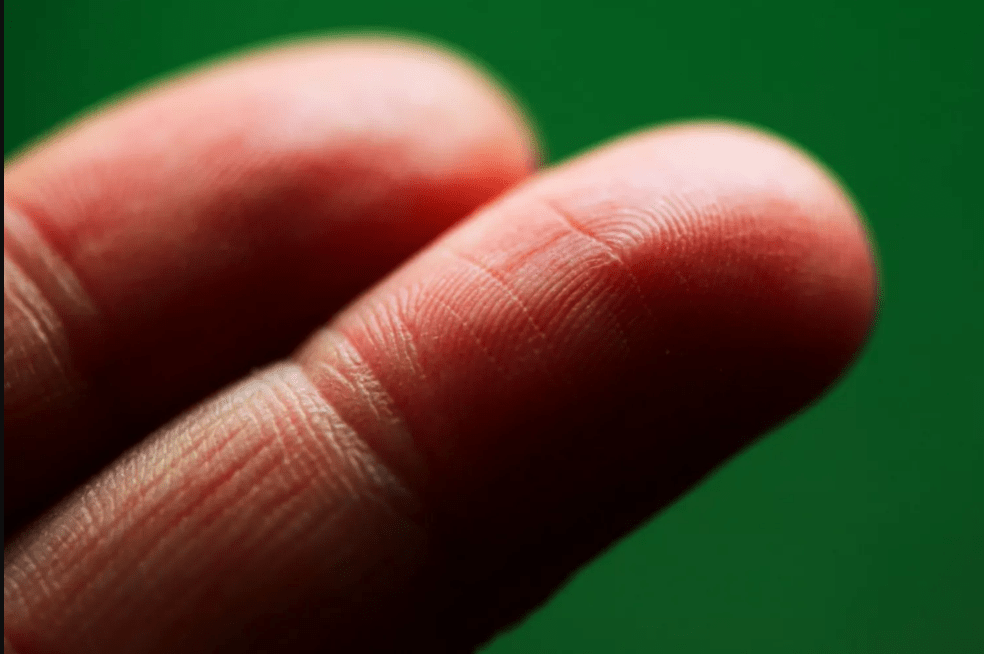You are not as weird as you thought you are if you can’t do but thinks once in a while WHY DO I HAVE FINGERPRINTS!?
Not just in a biologically sense now, even scientists still aren’t quite sure what our fingerprints are for. But atleast we know what they can do. LOL.
As they test different hypotheses, they’re getting closer to the answer—and learning some pretty cool stuff in the process.
What's in this guide?
Is it to improve our sense of touch?
Back in twenty 09, some researchers in Paris made a study which lead to building two bio-mimetic tactic sensors, which imitate the human ability to touch and perceive substances. one had flat like smooth skin; while the other was grooves that mimicked fingerprints. When these artificial fingers moved across roughly-textured surfaces, the fingerprinted sensors produced vibrations up to a thousand times stronger than its colleagues that is using a smooth ones. These vibrations, the scientist found, were dominated by a frequency in the optimal range of sensitivity of pacinian corpuscles, receptors in our skin that detect pressure changes and vibrations. These researchers thick that our fingerprints job might be to amplify certain tactile information so that it’s more easily processed by the nervous system. They also suggest that swirling patterns of fingerprints ensure that some of the ridges are always brushing sideways across surface, no matter which way the finger is moving, to better generate vibrations.
Is it to improve our grip?
Humans are not the only ones with fingerprints, apes, monkeys and koalas all have fingerprints. Some New World monkeys even have ridged pads on their tree-gripping tails. Fingerprints’ design, and their presence in all these animals, has led people to think that they’re an adaptation for improved grip while climbing trees and manipulating objects, but there isn’t much experimental evidence for that. At the University of Manchester, Research by biomechanicist , who tested the idea in 2009, suggests that a good grip isn’t fingerprints’ forte. Dr. Roland Ennos and his student Peter Warman tested the grip of Warman’s fingers at different angles on strips of acrylic glass sheets similar to Plexiglas. While many solid objects obey Amonton’s law and friction between them is proportional to the force between them, the friction between finger and glass increased less than Ennos expected when more pressure was applied. The pair inked Warman’s fingers to measure the contact area between them and the sheets and found that friction did increase when the contact area increased, but also noted that the grooves between fingerprint ridges reduce the fingers’ contact surface with the glass by about one third, compared with smooth skin, and actually reduced friction and ability to grip.
Fingerprints and Bacteria
Researchers from the University of Colorado at Boulder have shown that bacteria found on the skin can be used as personal identifiers. This is possible because bacteria that live on your skin and reside on your hands are unique, even among identical twins. These bacteria are left behind on the items we touch. By genetically sequencing bacterial DNA, specific bacteria found on surfaces can be matched to the hands of the person from which they came. These bacteria can be used as a type of fingerprint because of their uniqueness and their ability to remain unchanged for several weeks. Bacterial analysis could be a useful tool in forensic identification when human DNA or clear fingerprints can not be obtained.
What are some other possibilities?
Ennos and Warman throw out a few other plausible explanations for fingerprints at the end of their paper: that they allow our skin more to more easily comply with and deform to objects we’re touching or holding, reducing shear stress and preventing blister formation; that they increase friction on rough surfaces compared with flat skin because the ridges project into the depressions on these surfaces and provide a higher contact area; that they facilitate runoff of water like tire treads. Ennos says his lab is testing all of these hypotheses, but hasn’t published any results yet.
Key Takeaways: Why Do We Have Fingerprints?
- Fingerprints are ridged patterns that form on our fingertips. Several theories have arisen as to why we have fingerprints but no one knows for sure.
- Some scientists believe that fingerprints may provide protection for our fingers or increase our sensitivity to touch.Studies have shown that fingerprints actually inhibit our ability to grasp objects.
- Fingerprints consist of arch, loop, and whorl patterns that form in the seventh month of fetal development. No two people have identical fingerprints, not even twins.
- Those with the rare genetic condition known as adermatoglyphia are born without fingerprints.
- The unique bacteria that live on our hands can be used as a type of fingerprint.
Sources
- Britt, Robert. “Lasting Impression: How Fingerprints Are Created.” LiveScience, Purch, http://www.livescience.com/30-lasting-impression-fingerprints-created.html.
- Big Question- ;why do we have fingerprints’. www.mentalfloss.com
- “New Hand Bacteria Study Holds Promise for Forensics Identification.” ScienceDaily, ScienceDaily, 16 Mar. 2010, http://www.sciencedaily.com/releases/2010/03/100315161718.htm.
- Nousbeck, Janna, et al. “A Mutation in a Skin-Specific Isoform of SMARCAD1 Causes Autosomal-Dominant Adermatoglyphia.” The American Journal of Human Genetics, vol. 89, no. 2, 2011, pp. 302307., doi:10.1016/j.ajhg.2011.07.004.
- “Urban Myth Disproved: Fingerprints Do Not Improve Grip Friction.” ScienceDaily, ScienceDaily, 15 June 2009, http://www.sciencedaily.com/releases/2009/06/090612092729.htm.
Have you got a mystery disturbing your mind you’ll like us put a solution to? Then, let us know by sending us a DM at http://m.me/aidthestudent And do like our page while on it.
Twitter users can also make nice with me and ask questions there.
Join our Telegram channel – Premium Courses & eBooks For Free



